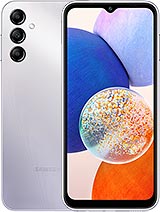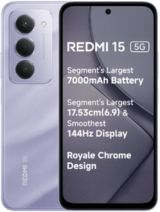Redmi 15 alternatives
Tap above to see alternatives.
Tecno Pova Curve 5G alternatives
Tap above to see alternatives.
Tecno Pova Curve 5G

Tecno Pova Curve 5G
-
Dimensity 7300
4 nm
-
5500 mAh
45W
-
6.78"
1080 x 2436 pixels
-
64 MP
4K@30fps
- Specs
2x2.3 GHz Cortex-A78
6x2.0 GHz Cortex-A55
4x2.5 GHz Cortex-A78
4x2.0 GHz Cortex-A55
8GB 128GB (UFS 2.2)
8GB 256GB (UFS 2.2)
8GB 128GB (UFS 2.2)
f/1.75, (wide), 1/2.88" 0.61μm, PDAF
Auxiliary lens
Sony IMX682, f/1.8, (wide), 1/1.73", 0.8µm, PDAF
2 MP
f/2.4, (depth)
1080p@30fps
f/2.2, (wide)
(Wide), f/2.2
1080p@30fps
SIM1: Nano, SIM2: Nano
7 5G bands
n1, n3, n5, n8, n28, n40, n78
2 5G bands
n3, n38
In this performance comparison, the Tecno Pova Curve 5G with its Mediatek Dimensity 7300 (4nm) performs better than the Redmi 15 with the Qualcomm Snapdragon 6s Gen 3 (6nm), thanks to superior chipset efficiency.
Both phones offer the same 2 years of OS update support. For security updates, Redmi 15 offers 4 years of support compared to Tecno Pova Curve 5G's 2 years.
Tecno Pova Curve 5G features a superior AMOLED display, while Redmi 15 comes with an LCD panel. Both smartphones offer the same 144 Hz refresh rate. Tecno Pova Curve 5G also boasts a brighter screen with 1300 nits of peak brightness, enhancing outdoor visibility. Both phones have the same screen resolution.
Redmi 15 comes with a larger 7000 mAh battery, which may offer longer usage on a single charge. Tecno Pova Curve 5G also supports faster wired charging at 45W, compared to 33W on Redmi 15. Redmi 15 supports wireless charging at -2W, while Tecno Pova Curve 5G does not support wireless charging.
Both phones feature the same IP64 rating for water and dust resistance.
¹ Scores can vary even with the same chipset due to RAM, thermals, and software optimization.









